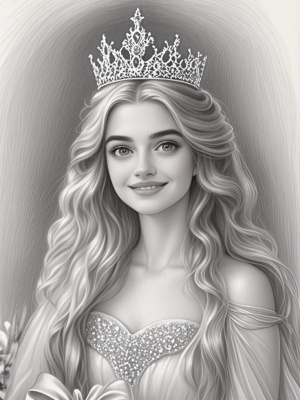Pencil Sketch Tutorial for Beginners: A Step-by-Step Guide
Are you a budding artist eager to learn pencil sketching? This comprehensive tutorial will guide you through the fundamentals of pencil sketching, from choosing the right materials to mastering basic techniques. Whether you're sketching portraits, landscapes, or still life, this guide will help you develop your skills and confidence.
Essential Materials for Pencil Sketching
Before you start sketching, it's important to have the right tools. Here's what you'll need:
- Graphite pencils (ranging from 2H to 6B for different shades)
- Sketching paper (medium-textured paper works best)
- Erasers (kneaded and vinyl erasers)
- Blending stumps for smooth shading
- Sharpener to keep your pencils in perfect condition
For more art supplies recommendations, check out our AI Art Guide which includes helpful tips for traditional artists too.
Basic Pencil Sketching Techniques
1. Holding the Pencil
There are three main ways to hold a pencil for sketching:
- Writing grip - for detailed work and fine lines
- Underhand grip - for broader strokes and shading
- Extended grip - for loose, gestural sketches
2. Creating Value and Texture
Master these fundamental shading techniques:
- Hatching - parallel lines
- Cross-hatching - intersecting lines
- Stippling - dots
- Blending - smooth gradients
Step-by-Step Pencil Sketch Process
1. Start with Basic Shapes
Every complex object can be broken down into simple geometric forms. Begin your sketch by lightly drawing these basic shapes to establish proportions.

2. Add Contour Lines
Once you're satisfied with the basic shapes, start refining them with contour lines that define the edges of your subject.
3. Develop Values and Shadows
Identify your light source and begin adding shadows. Start with light pressure and gradually build up darker values.
4. Add Details and Texture
This is where your sketch comes to life. Add fine details and textures that make your subject recognizable.
5. Final Touches
Review your sketch, adjust any proportions if needed, and add the darkest accents to create depth.
Common Beginner Mistakes and How to Fix Them
Here's a quick problem-solution matrix for common sketching challenges:
| Problem | Solution |
|---|---|
| Sketch looks flat | Focus more on value contrast and shadows |
| Proportions look wrong | Use measuring techniques and check relationships between elements |
| Lines look scratchy | Use confident strokes and vary line weight |
| Shading looks muddy | Keep your pencils sharp and layer gradually |
For more troubleshooting tips, visit our AI Painting Guide which includes traditional art techniques as well.
Practice Exercises for Improvement
Try these daily exercises to improve your pencil sketching skills:
- Gesture drawing - 5-minute sketches to capture movement
- Value scales - practice smooth transitions from light to dark
- Blind contour drawing - improves hand-eye coordination
- Negative space drawing - trains your eye to see shapes differently
Conclusion: Your Sketching Journey Begins
Pencil sketching is a rewarding skill that improves with practice. Remember that every artist was once a beginner, and consistent practice is key to improvement. Don't be discouraged by early struggles - they're part of the learning process.

For more artistic inspiration, explore our gallery featuring various art styles. Also check out these authoritative external resources: Artist's Network and Drawspace for additional tutorials and inspiration.
Happy sketching! With patience and practice, you'll see remarkable progress in your pencil drawing skills.